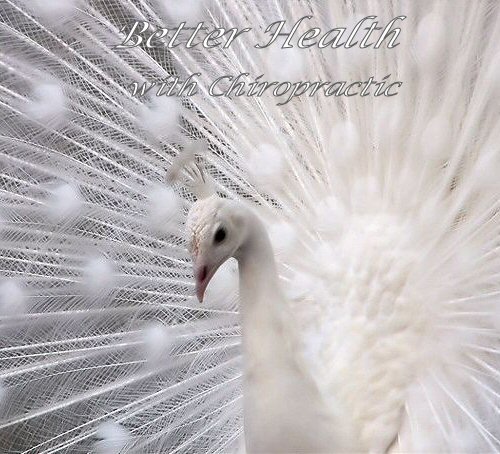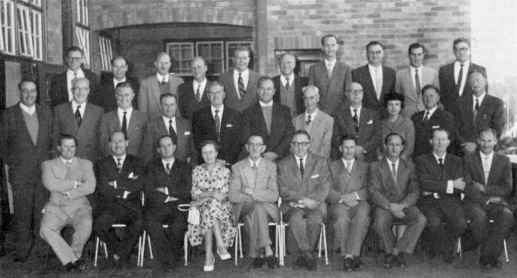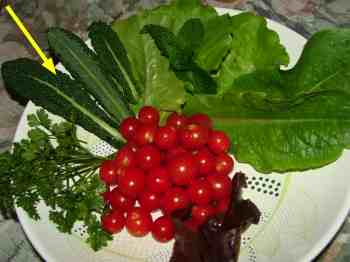| Back to Back Issues Page |
 |
|
CHIROPRACTIC HELP #43: Art science chiropractic April 23, 2015 |
| Dear
Art and science of chiropracticChiropractic, like medicine, is an art and a science. It takes great skill, like hitting a baseball sweetly, to give an effective adjustment; but you also have to apply the appropriate manipulation at the right level, in the correct direction and with the minimum but adequate force. Greetings, once again, to you all; this is the newsletter helping you to achieve better health with chiropractic; or, in the words of J. Robert Oppenheimer, to have a body that runs noiselessly. That means a great deal more than the adjustment of subluxations; exercise and good nutrition, and don't forget your brain and nerves. They need plenty of oleic acid and omega 3 fatty acids; amongst several thousand other vital substances found in your food and drink. That's why it's recommended you eat from as wide a spectrum of fruit, vegetables, grains, nuts, seeds and fats as possible. Can you get them all in tablet form? It's interesting that how fast you walk is directly related to whether you will get Alzheimer's disease or not. That's a good reason to look after the undercarriage; a neglected sprain of the ankle, or undiagnosed hip dysplasia will effect how long your brain lives. This blog may seem like a tedious bit of family history, but bear with me. There are important principles here that will directly affect you. Art Science Chiropractic
 Those of you who have been following this newsletter for some years will know that both my parents were chiropractors. Dr Unity Lewis, my mother is the only woman in the front row. My father, Dr Dick Lewis, is second from the left in the back row. They were divorced; unable to take holidays together places great strain
on any relationship. It takes special qualities to enable like minded professionals to practise together; it should be the exception, and not the norm, in my opinion. What's interesting is that they practised in quite different ways; that's what this newsletter is really about. My mother was the academic; dux of her school, daughter of a professor, she practised from a very scientific background. She scoured the Roentgenological Briefs of the ACA with a fine toothcomb. We had our own xray unit and every radiograph was dissected and covered with lines measuring this and that. Every patient had a full orthopaedic and neurological examination. A diagnosis, for better or for worse, was made. Did you know that research published in Lancet, reveals that medical doctors get the diagnosis right less than 50 percent of the time? I'm not sure that we do any better, but Dr Unity Lewis made a damn good attempt to get it right. She trained in the 1930's at the Lincoln Chiropractic College. I've recently been reading her Gray's Anatomy; it's well thumbed. The science of chiropractic was central at Lincoln obviously. Art and science of chiropractic
My father, Dr Dick Lewis, was a very different kettle of fish. A scratch golfer, he gave as fine an adjustment as I have received from any of the many different chiropractors who have treated me over the years. The only man who came close was Dr Bud Groves from Mount Horeb, Wisconsin. Dick Lewis trained at Palmer College of Chiropractic; I don't know who influenced him, but he could give a very skilled adjustment; he turned it into an art form of the highest magnitude. Other chiropractors in the field who were unable to 'get a back right' would send their difficult cases to my father. I was adjusted by both my parents during my childhood; both had their strengths, and their weaknesses. My father would miss an important diagnosis because the science of chiropractic was not one of his strengths. My mother would not be able to succeed with a difficult lower back because she was weaker in the art of chiropractic. Art and science of surgery
Whether you are rebuilding a knee with orthopaedic surgery, a slipped disc with chiropractic, or fashioning a fine chest of drawers, art and science are involved. It takes an admixture of both to do a fine job. The top surgeons excel in the art and the science; the best chiropractors and craftsmen do too. Art versus science
Our schools tend to measure the science more successfully. My mother I know would have graduated near the top of her class, my father in the lower half. Both were popular with their patients; like all doctors of any ilk, sometimes they got the diagnosis right, and sometimes not. Mostly they could fix an acute lower back, but occasionally not. Who
would I choose?
I had in those days a chronic lower neck problem after a
fall in the mountains. My father had the knack of adjusting the cervico
thoracic junction like no other chiropractor I have ever met. My mother
was particularly good at deciding what to adjust in my lower back. She
could work out whether it was the SI that needed treatment, or L4 or L2.
By thorough examination and orthopaedic testing, fluent motion palpation, she knew what needed
to be done; and, despite being a tiny woman, she could do it. Giving a good adjustment is about timing, not brute force and ignorance; like hitting that baseball. Interestingly, my daughter, the first third generation chiropractor in South Africa is a good mix of her grandparents; she has fine hands and a great mind. There aren't too many chiropractors anywhere in the world who could fix a lumbar disc that double extruded into the foramen and sequestered into the spinal canal like I suffered some two years ago; but she
did. I still have some numbness in the foot from the fragment of the disc that is located in the spinal canal, but no pain and no disability, though it grumbles periodically. Every chiropractor has some back issues from bending over their patients all day. It was she who advised that I have an MRI. Despite the fact that it was clear that the L3 dermatome was involved, it wasn't clear whether I had a lateral disc at the L3/L4 level, or a medial disc at L2/L3. Adjusting the correct level is vital in difficult cases. Even the knee jerk reflex and the strength of the quadriceps have returned. Art plus science makes great chiropractic. Choosing the right chiropractor or surgeon.
I'm a great believer in gut feel. When first consulting any new doctor, we have little idea of their strengths and weaknesses. Rather than be wooed by bedside manner, judge rather how thorough he or she was. Did they take a full history of your problem? Was a thorough examination done? Are you sure they were interested in you and your problem, or did you have the distinct impression that the dollar sign figured big in the equation? Was he just a little too familiar? Choosing the right doctor with whom you click is vital. Don't be embarrassed to go with that gut feel; it's the right thing to do. Having been in both, I'm not a great believer in the solo practice. In the multi doctor practice, sometimes you may find that Dr X does a great job on your lower back, but there's something lacking when you have a neck problem. Every chiropractor has a thick skin, or should have; don't feel embarrassed to ask if he minds if you consult a colleague when your neck is troubling. We all have our strengths, and our weaknesses too. I find a number of my new patients consulting my daughter after a few months; and vice versa. It's the right thing to do if you are less than happy. Kale Kale is something of a forgotten vegetable, but it's particularly rich in nearly fifty different bioflavonoids, and vitamins A, C and K. Young leaves can be enjoyed in a salad, as in the photograph above ( 3 young leaves at 11 o'clock), or lightly steamed. This raises an interesting aside. There are over 2000 of these phytochemicals that we need in small amounts to enjoy optimum health, and help us prevent getting many diseases and cancer. Scientists are finding there's a synergy between them that is still little understood. You certainly can't get them all if you eat from a narrow range of foods. Vitamin companies will try to induce you to spend large amounts on their products; many of them are synthetically made and few have the diverse phytochemicals that your salads, vegetables and fruit have. Egg, nuts, seeds and grains, too, of course. And some of them are decidedly dangerous; for years I had no idea that taking vitamin E, exclusively from wheat germ as it so happens, so it included only the alpha tocopherol fraction, actually significantly raised the risk of getting prostate and presumably other cancers. We need mixed tocopherols and that means a broad spectrum of foods. My grandchildren are not strong on their greens, but interestingly tonight they finished the kale leaving nothing for us! Instinctively it would seem, they know about the nutritional value of kale. It has little flavour, so I like to fry half an onion in butter, drop in spices from the Indian market and perhaps a tomato and a little water to steam. It's worth taking the time to de-vein the main stem. In all it takes maybe ten minutes to pop a cardamom pod, cut a slitter of chili and half a teaspoon of curry powder and a clove of garlic and wash and prepare the kale. Absolutely delicious and full of fibre for the
colon too. It's dead easy to grow in the American summer, and all year round in South Africa. Recuperation and rehabilitation
I am absolutely convinced that the seriousness of lower back pain is the failure to appreciate that it takes longer for the tissue to heal than we realise. So we injure it again. After a bout of pneumonia you feel sick and it's obvious that a period of recuperation, rest, with a tonic and good food is necessary. It's just as important with a musculoskeletal injury, but because we don't feel sick, we're champing at the bit to get back to work and play. I'll be doing a page on the subject in the next few weeks; look out for it. Thought for the day
"To try to be happy is to try to build a machine with no other specification than that it shall run noiselessly."
J. Robert Oppenheimer Vaccinations
The whole question of vaccinations remains a vexed subject. Personally I believe in the prevention of serious diseases like polio. But flu shots every year? Did you know that the pharmaceutical industry recommends your children have 19 different shots? And now talk that Big Brother is going to make them mandatory is frightening.
Till next month, then... yours in better health.
Barrie Lewis DC and Bernard Preston DC! PS. Feel free to forward this to family and friends, your chiropractor and even your medical doctor! You can support this site by purchasing one of Bernard Preston's chiropractic books. Dirt cheap on you Kindle, tablet or smartphone.
|
| Back to Back Issues Page |